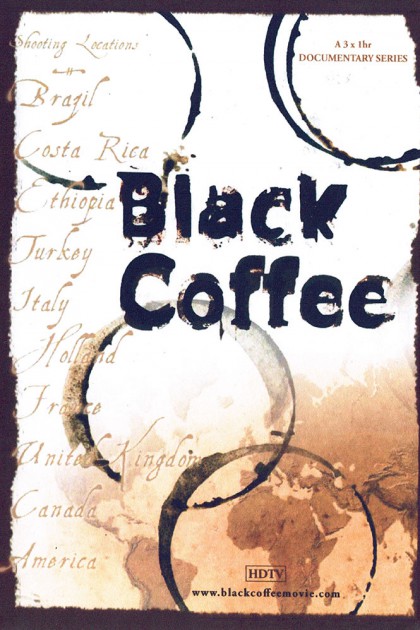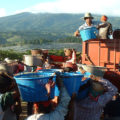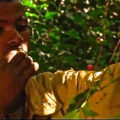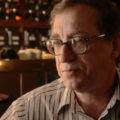Black Coffee
Part III: Gold In Your Cup
…a thoroughly engaging piece of work — historically and culturally fascinating, emotionally involving, enlightening.
— Janice Kennedy, The Ottawa Citizen
Part One: The Irresistible Bean Carries us back to coffee’s origins in Ethiopia and its triumphant spread over five continents sparking revolution controversy business and slavery al along the way.
We see the first coffee house traditions which begin on dirt floors and evolve to more refined Arabic home versions. Venetian latté develops a cachet that is the model for Western coffee marketing — 450 years later. The French cast off the monarchy. Americans toss their tea into Boston harbour. Haitian plantation slaves rebel, all under the heady aroma of the bean. But the harshest and the most enduring form of coffee slavery had not yet begun.
Part One ends when a British military officer and gigolo smuggles a single coffee plant into Brazil. The innocent gift he receives from a French lover will change the face of Latin America and the world forever.
Part Two: Gold in Your Cup Uses an elegant contemporary competition created to elevate the quality of coffee in Brazil to frame a portrait of 19th century coffee-fuelled oppression in Latin America. It takes us back to examine coffee’s stranglehold in Brazil and Central America, leading to coffee barons, the subjugation of Indians and Africans, and the destruction of the rainforests and, ironically, the evolution of both democracy and dictatorships.
Events are fuelled by increased consumption in North America, due to brilliant marketing and the new mass production of branded coffee, but the quality of the coffee descends to an all time low. In the Depression era, Brazilian dictator and patriot Getulio Vargas burns surplus coffee to maintain market prices, leading Pan American leaders try to convince Americans that a fair price for their coffee is their only way out of poverty, but their pleas fall on deaf ears.
In urban center in North America, people like Leonard Cohen and Bob Dylan are leading the emergence of a brand new coffeehouse culture. No one knows it yet, but the new bohemians represent Latin America’s best hope for a better future. They pisses a heightened sense of social justice and best of all, they’re hooked on dark, rich quality coffee.
Part Three: The Perfect Cup heralds what some coffee experts have called ‘the romantic age of coffee.” North Americans re-discover what their European counterparts have known all along: coffee is better when it’s quality coffee, and the best place to find it is in the relaxed and friendly atmosphere of the café.
A quirky collection of vagabond hippies emerges from the 70s to create mega-chains like Starbucks and Second Cup in the 80s. Coffee becomes the first global industry to experiment with Fair Trade practices and a new breed of co-operative farmer is born n Central America. The new coffee consumers expect social justice in their morning cup.
Consequently, marketing executives begin to realize that “fair trade” is more than ethics. It’s good business. Consumers feel better knowing that drinking coffee is contributing to sustainable agricultural practices and increased profits for the small grower.
As we enter the new millennium, the fair trade coffee bean remains a small part of the overall market. But, with consumer consciousness on the rise, coffee represents the best hope modeling a new relationship between the “have” and “have not” hemispheres. And in Cyber-cafés around the world, enlightened coffee drinkers and activists are making sure that the fair trade model continues to grow.





